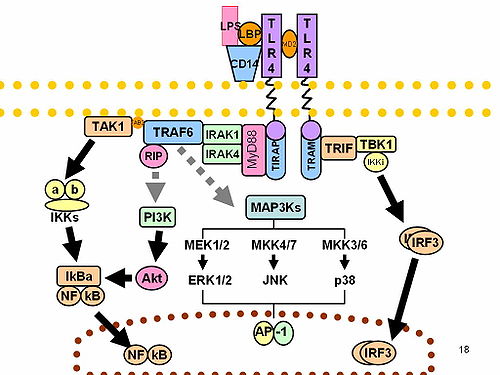To the Inova family,
When
I was in high school, one of the most enjoyable experiences I had was
playing in the concert band. I was a saxophone player, or a baritone
saxophone player to be more precise. I wasn’t very good due to lack of
practice and presumably talent as well, but I had the opportunity
frequently to travel to the “big city” of Asheville, N.C. to audition
for a seat on the all-state band. You see, there are very few baritone
sax players and even if you weren’t very good, you had a chance to be
chosen for this highly selective band due to lack of competition. I
always used to get nervous despite my reasonably good prospects and can
still remember the tension of those auditions as if it were yesterday.
So
it struck a chord when someone recently shared with me the story of an
aspiring French horn player who tried out for a highly coveted spot on a
prestigious symphony orchestra. The player had practiced for endless
hours and had worked with a coach to gain all the fine points of style
and finesse that mark the truly excellent players of the instrument. To
prevent any unintended bias in the selection process, each hopeful had
to play behind a screen to keep their identity hidden. The orchestra’s
other French horn players served as judges to select their new
colleague for the orchestra and they were renowned for having extremely
high standards. Excellence in performance was EVERYTHING to them! So
after hearing over twenty auditioning players, it was a little
surprising that they were unanimous in their choice and selected the
French horn hopeful who had worked so hard.
It
struck me in hearing that story that excellence really does matter.
Being good or even very good is nice but it’s really not what we at
Inova are striving for. As many of you may know, the Medicare program
administrator (CMS) rates each hospital on the quality of its patient
experience. They ask a sample of patients to rate everything from how
clean and quiet their room was to how well the doctors and nurses
answered their questions, managed their pain and helped them understand
what they needed to do to actively help with their own recovery. The
interesting thing is that the way scores are calculated, they place the
highest emphasis on how EXCELLENT the care was. In many respects, it is
the number of patients that rate our care as EXCELLENT that determines
how our scores come out (and, as an aside, how much we get paid!). I
have written often that our highest priorities are embedded in our
“TRUE NORTH” goals of providing the highest quality, the best experience
for our patients and their families, and reducing our costs to make
our care affordable for the most people. Like the orchestra musicians,
quality, experience and affordability are EVERYTHING to us!
And
you know what—nothing but excellent IS acceptable! Like the French
horn player who “made the team”, we must remember “very good” just means
on some occasions, our patients had pain, they were anxious or fearful,
they didn’t understand what was going on, they didn’t understand
their medicines, or the room was loud and they couldn’t sleep. Sadly,
on some occasions we did things that led to longer periods of recovery
and in some instances, caused real harm!
On
July 4, we are reminded that some things count most when they are
measured in absolutes—such as giving one’s life for your country, or
preventing a terrorist bombing, or being there to treat the victims of a
disaster. You either prevail in your efforts or some people may pay
dearly--sometimes people die or lose their freedom. Today we celebrate
our independence and similarly, I would invite you to remember that our
patients depend on us absolutely. In short, they depend upon us for
excellence and nothing less—their very lives may depend upon it.
When
the young French horn player who won the audition walked out from
behind the screen, the judges” jaws dropped. Their new colleague (did I
mention that they were all men?) was a 29 year old, Asian woman—let’s
face it, she didn’t fit the stereotype of what they were expecting at
all. Not by age, not by gender, not by ethnicity – now they had to face
the fact that the old French horn section was going to look and be
quite different in the future. And you know what? It proved to be the
best French horn section that great orchestra ever had. Because nothing
less than EXCELLENT was acceptable to their new colleague. Their true
north was simple excellence, just like it is for our patients and their
families. So as we remember fireworks and cookouts, let’s also remember
that freedom isn’t free; that excellence doesn’t come without
persistent hard work; and that everyone should be judged on their
commitment to true north rather than some outdated stereotype. Our
patients deserve nothing less. Now that’s something we can all
celebrate!!
God bless you all,
Knox

